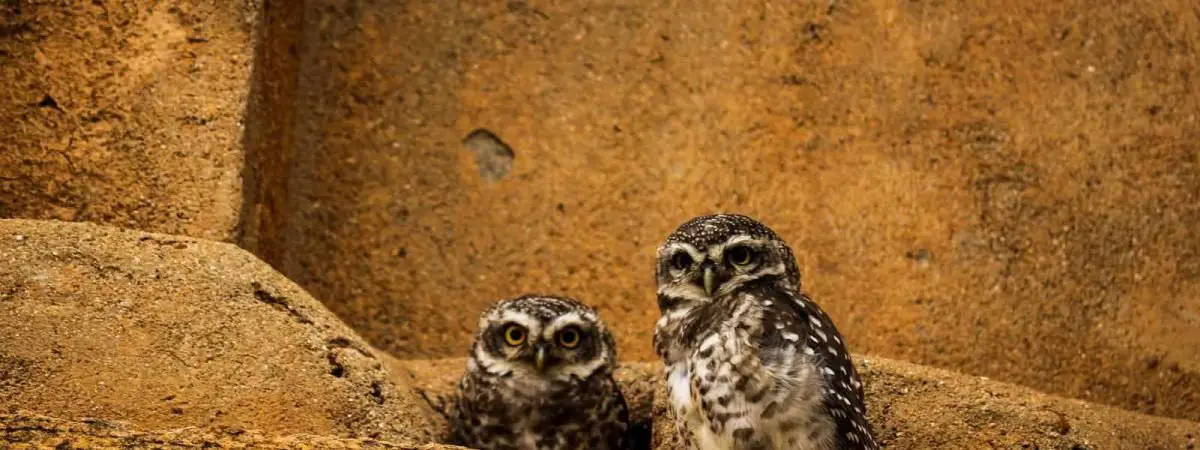
Want to learn more? This National Geographic Book on Owls is a great read!
There have also been sightings of Barn Owls however this data is limited and therefore they can’t be classed as residents of the state.
New Hampshire is a north-eastern state with a continental climate. This means that they have distinct seasons with warm summers and cold winters.
There are a large number of state parks totaling 93 but there are only 2 designated national parks in the state. If you are interested in looking for owls throughout this state, read on to find out more about each of the eight individual species you can find there.
Want to attract Owls to your yard? Take a look at our article!
What Owls can be seen in New Hampshire?
Table of Contents
1. Eastern Screech Owl
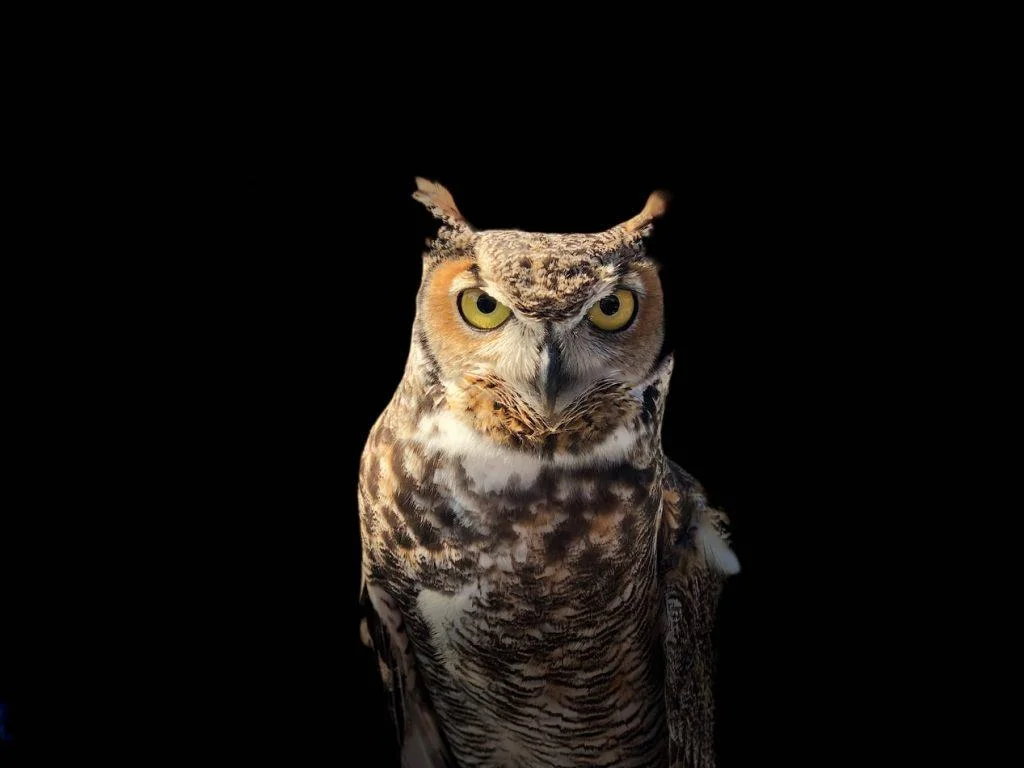
Wingspan
46 to 61 cm
Weight
160 g
Life Expectancy
14 years
Diet
Rats, Squirrels, Rabbits & Skunks
These birds are very similar in appearance to the Western Screech-Owl, they have small and stocky bodies and are covered in grey feathers.
Eastern Screech-Owls will form breeding pairs and will help raise young together, but they do not appear to mate for life despite being monogamous.
However, some males have been noted to mate with two females throughout the breeding seasons.
Males do most of the work when defending their small territories and will also feed females and their young when they first hatch.
You are most likely to see these birds in dense forests and they have been known to use manmade bird boxes. They have also been known to nest and breed successfully in city parks and farmlands.
As expected, you can find these owls throughout the eastern states of America.
You can see these owls year-round in New Hampshire and they have been seen throughout all regions of the state but they have been most commonly found in the southern half of the state.
2. Great Horned Owl

Wingspan
~140cm
Weight
1.4 kg
Life Expectancy
28 years old
Diet
Squirrels, Rabbits & Skunks
These owls get their names from their long, pointed ear that looks like horns on top of their heads.
These owls have thick feathers that are greyish brown shades and their bodies are big and stocky. These birds form long term breeding pairs, the breeding pairs have been known to stay with each other outside of the breeding season.
They remain monogamous to their partner. They are territorial birds and have a series of hoots that they will use to defend their territory, both members of the breeding pair will help defend their nests.
In fact, these birds have at times been known to kill other individuals of their own species that do not back off after aggressive displays. This is due to their territorial nature.
They are often harassed by other species of birds such as crows which will call and peck at them to try and get them to abandon the area and their eggs.
The Great Horned Owl can be seen in all areas of New Hampshire and are year-round residents in the state.
They are most active during their breeding seasons and most of the sightings of this owl have been in the south of the state.
3. Northern Saw-whet Owl
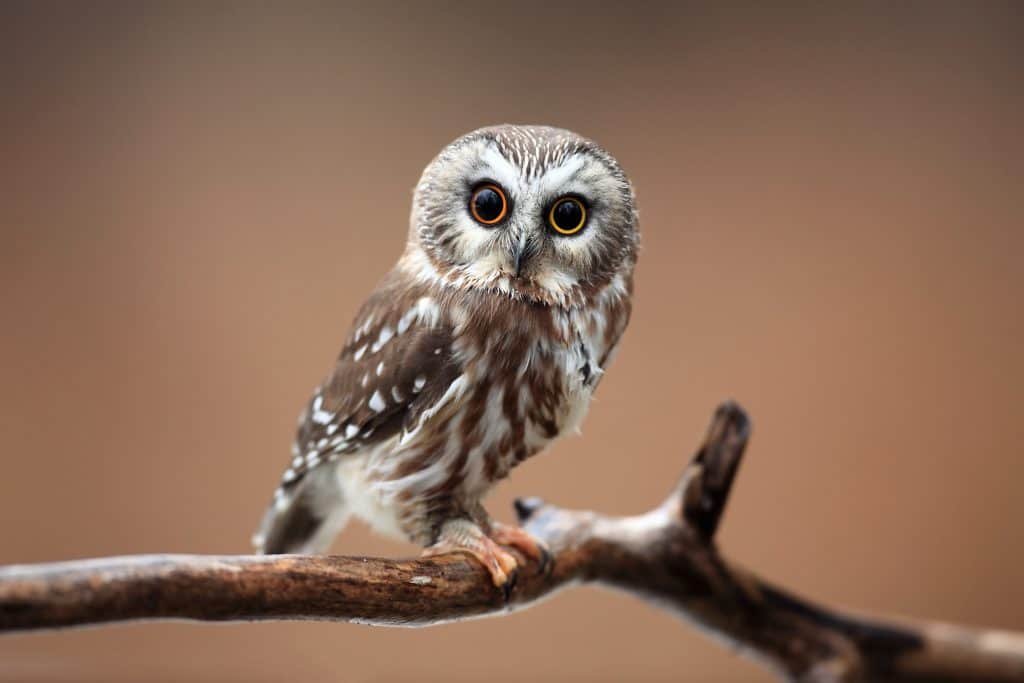
Wingspan
40 - 60 cm
Weight
100 g
Life Expectancy
7 years
Diet
Small birds, young squirrels, voles & shrews
The Northern Saw-whet Owl is a small species of owl that is covered in deep brown feathers.
These small owls make their nests in various forest habitats and roost throughout the day.
Whilst these birds are primarily monogamous, there have been instances of males mating with multiple females during the breeding season.
Their breeding season is from the end of January to the beginning of May which is when you will hear their distinct too-too-too mating call.
A male will begin the mating display as soon as a female enters his territory, he will circle around her in-flight 20 times before moving down to her and gifting her with a prey item.
They pair with new mates each year although some breeding pairs will stay with each other to defend their territory outside of the breeding season. These birds are often preyed upon by larger species of owls.
Some of these owls are permanent residents in the state and can be seen across all regions, however, there are some that are only present in the state outside of their breeding seasons.
This owl has a fairly even distribution across the state with most of the sightings in the southwest of New Hampshire.
4. Short-Eared Owl
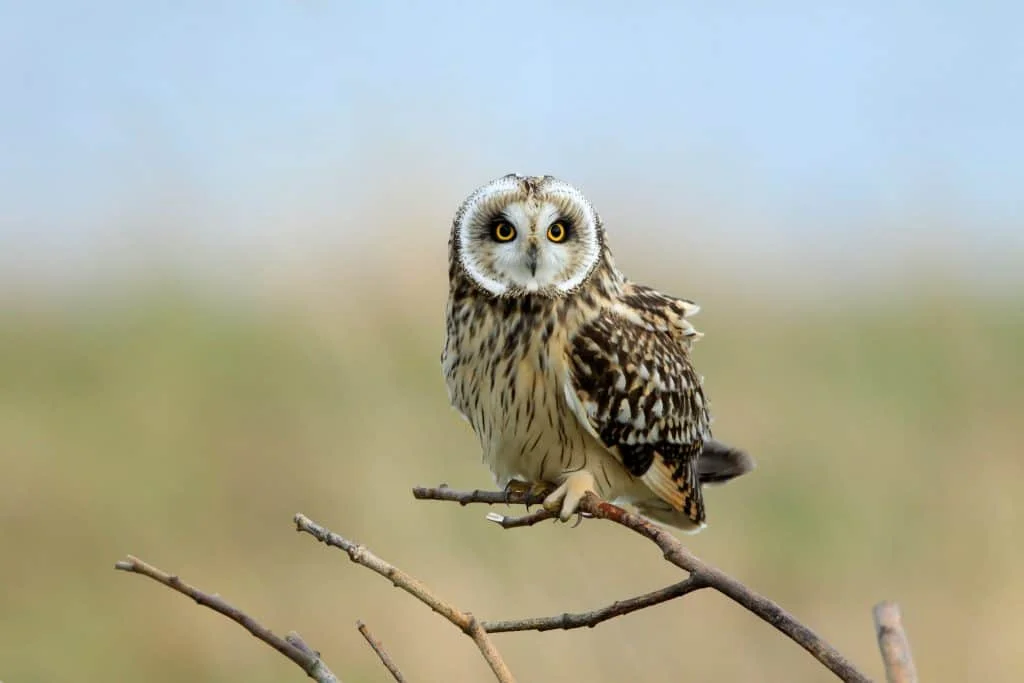
Wingspan
85 to 110 cm
Weight
206–475 g
Life Expectancy
4-12 years
Diet
Voles, Mice, Squirrels
Short-eared owls are a medium-sized species of owl that are covered in brown and white spotted feathers, they get their name from their barely visible ear tufts that are present on the side of their heads.
You can see these owls hunting during both the day and night and they prefer to stay in areas of open country and low vegetation.
Short-eared owls form loose colonies and are monogamous maters during the breeding season, however it is not confirmed as to whether individuals mate for life.
Breeding pairs will make their roosts on the ground in areas of tall grass, they only tend to roost in trees during the winter months especially when it is snowy.
Whilst females spend their time incubating the eggs the males will also help defend their territory with a series of harsh calls.
Similarly, to the Long-eared owl, these owls can be seen throughout all regions of the state but are only present in the months outside of their breeding seasons.
Most of the recorded sightings of this bird have been along the western border of the state.
5. Snowy Owl
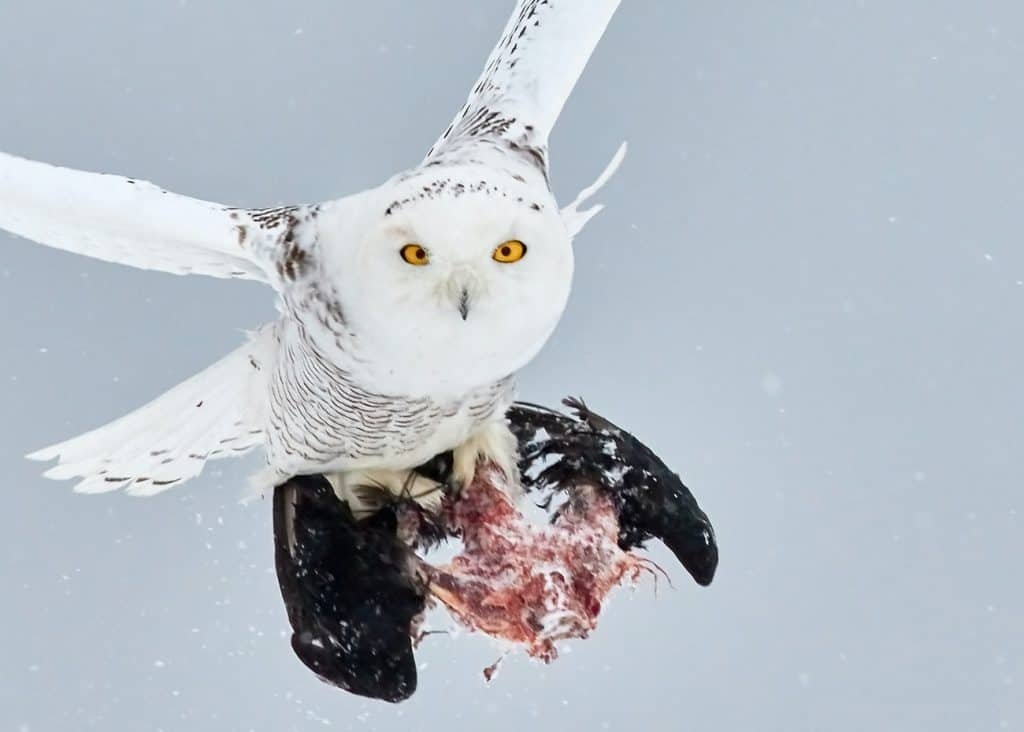
Wingspan
150 cm
Weight
2 kg
Life Expectancy
10 years
Diet
Birds, Rabbits, Fish & Rodents
The Snowy Owl is a species of owl that is covered in thick white feathers and they have brown and black markings that are sometimes visible on these feathers.
They vary in distribution from one individual to another and Snowy Owls are medium in size. Males exhibit a unique flight display when courting a female, they appear to be monogamous though it is not confirmed.
They will grasp some prey in their talons before performing a very large dive with their wings in a v shape.
These birds are incredibly defensive of their territories and are not afraid to attack their own species and others if necessary.
There has even been a reported incident of a snowy owl attacking a pair of arctic wolves. Snowy Owls like wide open spaces with a minimal number of trees, they are most commonly found in tundra habitats and across plains.
They will also perch of high man-made items such as telephone poles during the winter months. This is so that they can observe prey more clearly.
These owls are not commonly found in the state and are usually only seen in the wintering months.
That being said, they have been seen throughout all areas of the state with most of the recorded sightings of this owl being in the west of the state.
6. Long Eared Owl
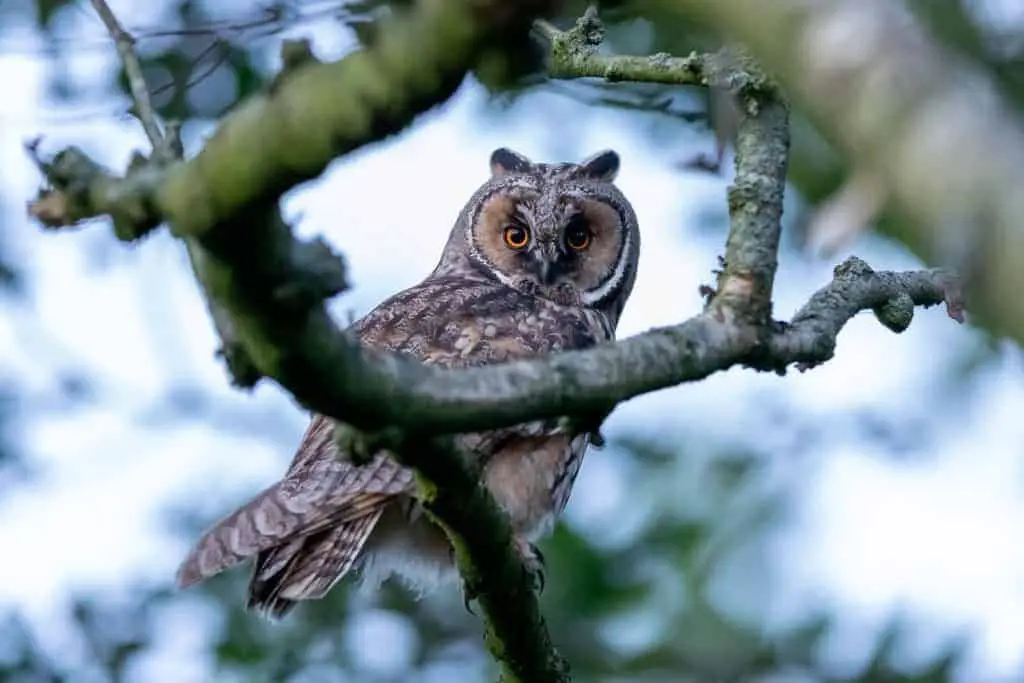
Wingspan
90 to 100cm
Weight
250 g
Life Expectancy
4 years
Diet
Small mammals, mice, rats & rabbits
The Long-Eared Owl, as the name suggests, is known for its long and prominent feathered ears.
They have orange faces and their bodies are covered with black and brown feathers. Their ears are the main distinction when identifying them from Short-Eared Owls.
These owls like to roost in dense woodlands and outside of the breeding season will roost in loose colonies of up to 100 individuals.
During the breeding season, these colonies will nest near each other, but they will not roost together.
These birds only mate with one individual during the breeding season, although it is not known as to whether they mate in subsequent seasons.
Males will perform a series of complex, zigzag flights whilst producing a mating call in an attempt to court a female.
Some Long-eared Owls are permanent residents in New Hampshire, but most are only present in the state outside of their breeding season.
They can be seen in all regions of New Hampshire, with most of the sightings of this bird being in the south of the state.
7. Great Grey Owl
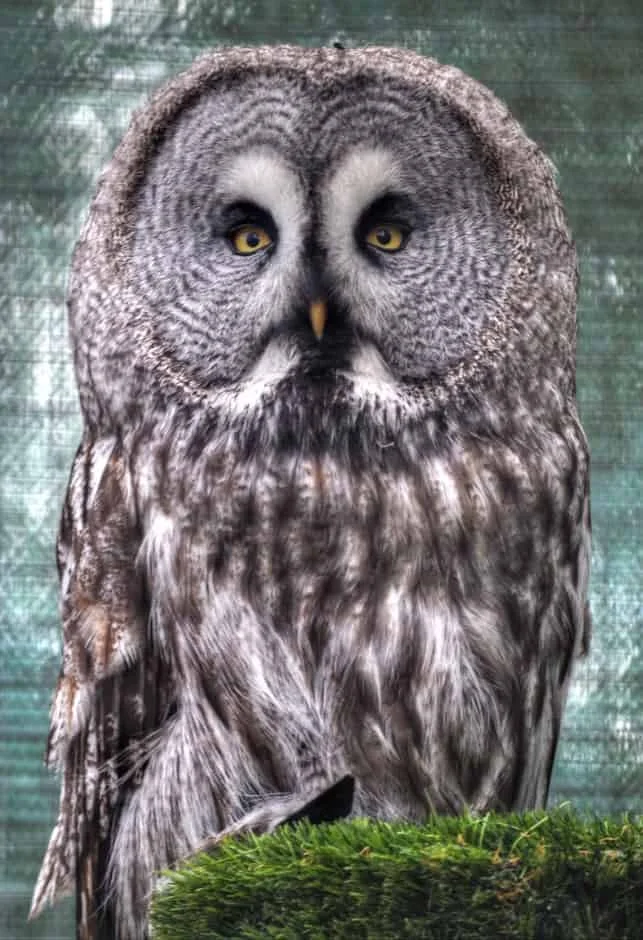
Wingspan
Up to 152cm
Weight
1.1 kg
Life Expectancy
12 years old
Diet
90% small rodents
These birds are one of the tallest species of owls to exist. As you can expect from the name, these owls are mostly a silvery grey color, but they can vary in shades including brown feathers.
These birds primarily hunt in meadows which is where you are most likely to see them. These owls are most likely to hunt during the day when they have nestlings or during the winter months when prey is less abundant.
It appears as though Great Grey Owls form monogamous and long-term breeding pairs, but the individuals do not stay close to one another outside of the breeding seasons.
There is less known about the behavior of these owls in comparison to lots of other species.
You can only see this owl in New Hampshire outside of their breeding seasons, most commonly in winter months.
You can see them throughout all regions of the state but they have been most commonly sighted in the central regions of the state.
8. Barred Owl
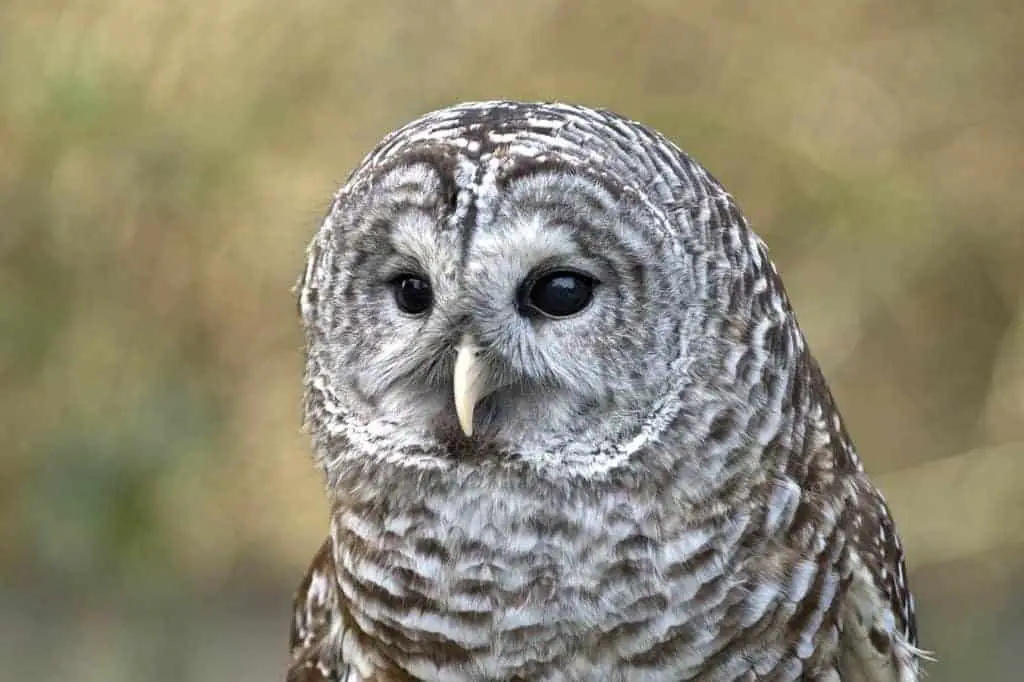
Wingspan
96-125 cm
Weight
468-1,150 g
Life Expectancy
10-23 years
Diet
Small mammals
Barred Owls are a large and stocky species of owl and they are covered with brown and white barred feathers.
These bars are vertical along their wings and belly. These owls stay ones close to bodies of water and will nest in a variety of woodlands but will nest in more mature forests if they are able to.
Barred Owls are very territorial and remain so throughout the year, females tend to be the more aggressive ones during the breeding season.
They have been observed using a kind of flight attack with their talons where they will collide with other birds. These birds are monogamous and are believed to mate for life.
They will raise a single brood of eggs together and if there is a predator, one parent will leave the nest to cause a noisy distraction and prevent the young from being attacked.
These birds can be seen throughout the year and have been sighted in all regions of New Hampshire.
They appear to be most active in the spring months and they have most commonly been sighted in the southwest of the state.

More Articles.
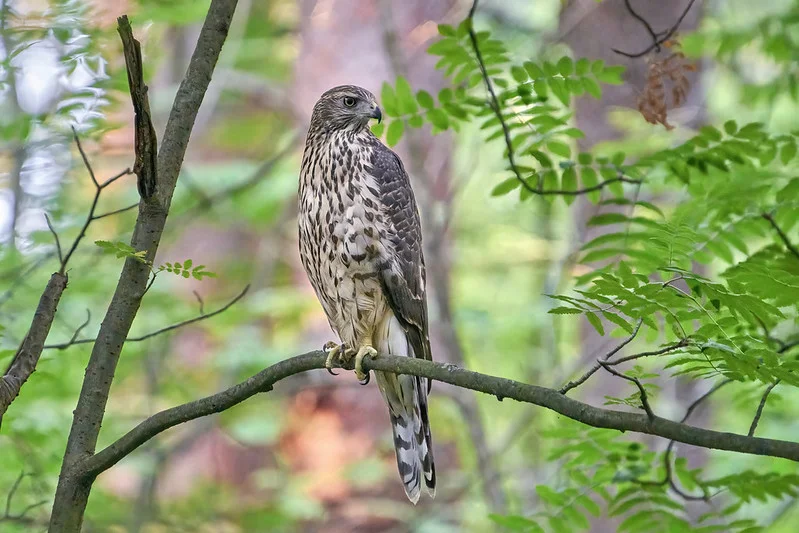
What Hawks can you see in Germany? (3 Species with Pictures & Sounds)
What Hawks can you see in Germany? There are 3 different species of Hawks that
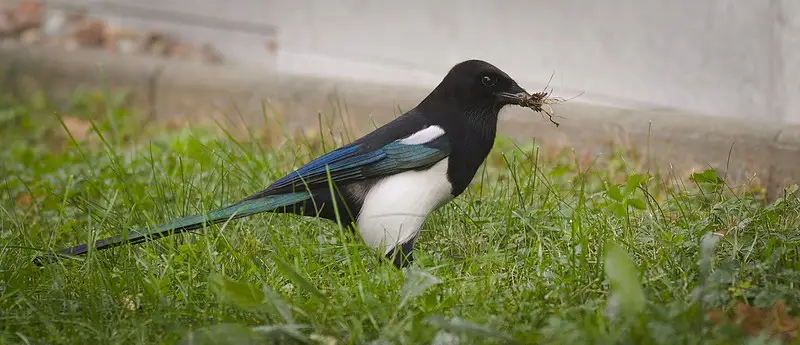
What does it mean to see a Single Magpie? (Symbolism & Meaning)
Seeing a single Magpie can mean a variety of things depending on your culture however

Birds are known to come in many different colors. Even birds of a similar species

About Us
We are avid bird-watchers who recently retired, allowing us more time to travel the world. Fortunately, we have managed to visit numerous countries around Europe, Asia, and America. Watching and photographing birds has been a passion for many years and we are making the most of the extra time on our hands!
